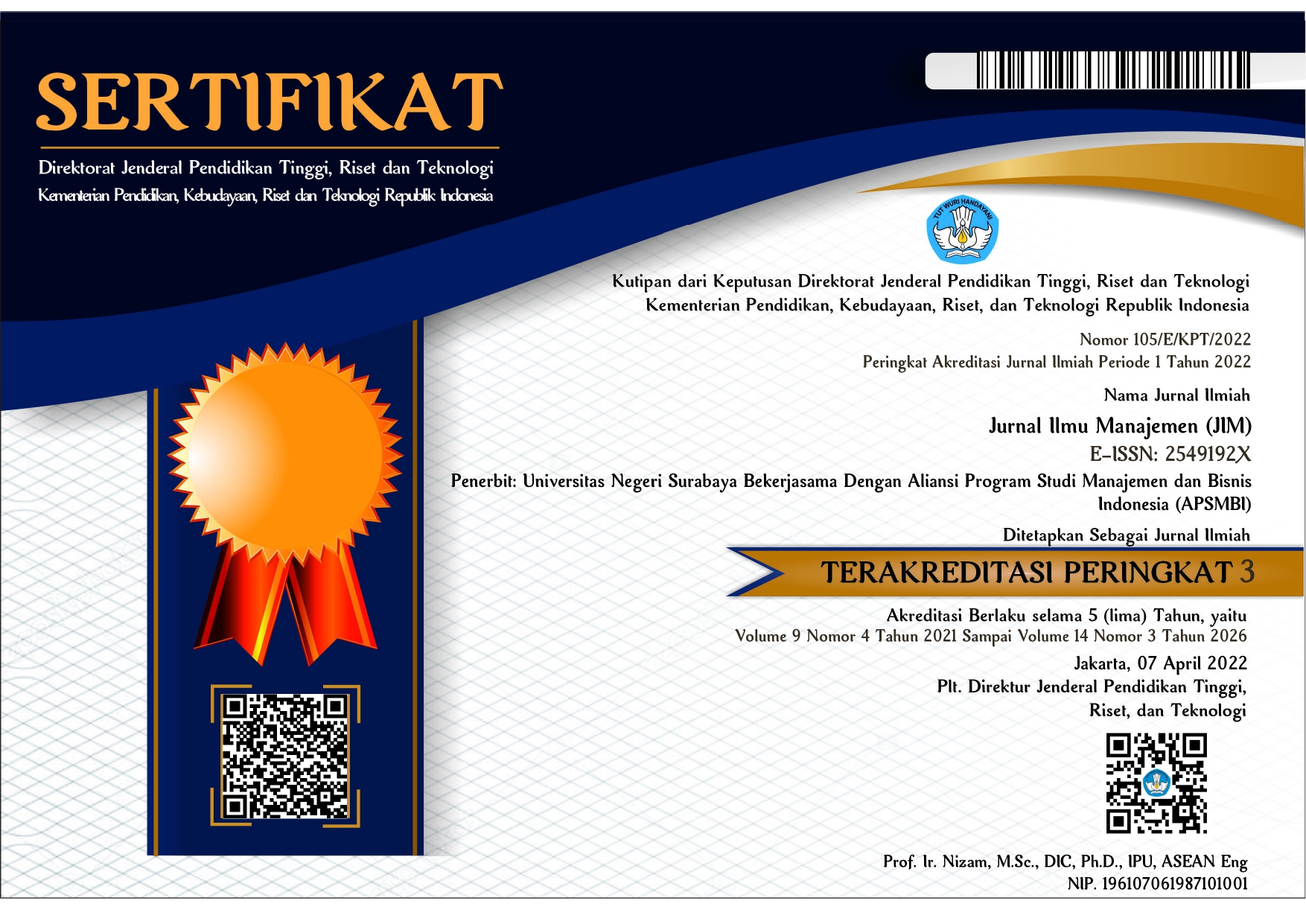Penerapan Balanced Scorecard serta Analisis SWOT dalam Perancangan Strategi pada Badan Usaha Milik Daerah PT Bank X
DOI:
https://doi.org/10.26740/jim.v9n4.p1487-1499Keywords:
balance scorecard, banking and finance, internal and external matrix, sustainable development growth, SWOT analysisAbstract
The Balanced Scorecard analyzes the overall performance of the organization through four perspectives. This study tries to show a Balance Scorecard perspective, then a SWOT analysis and can determine the company's position according to the Internal External Matrix. The object of this research is a holding company in the banking sector. Data collection methods in this study are primary and secondary data. Primary data can be obtained through interviews with key informants, and secondary data is obtained through documentation of the required data obtained from PT Bank X. The matrix is in accordance with the company's SWOT, then the results will be clarified using the IFE Matrix (Strength - Weakness) and EFE Matrix (Opportunities - Threats). The two Matrix that has been formed are plotted into the Internal - External Matrix and are in quadrant 1, so that PT Bank X's strategic position can be found in the Grow and Build position. The most appropriate strategy based on the Grow and Build position is to apply an Intensive Strategy with a specific strategy using market development strategies and product development. Based on the analysis of the BSC and IE Matrix, a strategic recommendation is produced on product development, including making efforts to improve the quality of human resources, improve credit quality, and digitize banking in preparing for competition in the era of industrial revolution 4.0.
References
Beneda, N. (2008). Wealth preservation through effective competitive strategy. Corporate Finance Review. 13 (1), 41?6.
Kaplan, R. S., & Norton, D. P. (1996). Using the balanced scorecard as a strategic management system.Harvard Business review.74 No 1. January-February 1996. 1-13.
Olson, E. M., & Slater, S. F. (2002). The balanced scorecard, competitive strategy, and performance. Business Horizons, 45(3), 11-16.
Peraturan Otoritas Jasa Keuangan Nomor 42/POJK.03/2017 Tahun 2017. (online). https://peraturan.bpk.go.id/Home/Details/129664/peraturan-ojk-no-42pojk032017-tahun-2017, diakses pada 8 Maret 2021.
Peraturan Otoritas Jasa Keuangan Nomor 12 /POJK.03/2018 Tahun 2018. (online). https://peraturan.bpk.go.id/Home/Details/128612/peraturan-ojk-no-12-pojk032018-tahun-2018, diakses pada 12 Maret 2021
Ritson, N. (2008). Strategic Management, Bookboon: Neil Ritson & Ventus Publishing ApS.
Srivastava, M., Franklin, A., & Martinette, L. (2013). Building a sustainable competitive advantage. Journal of technology management & innovation, 8(2), 47-60.
Velimirovi?, D., Velimirovi?, M., & Stankovi?, R. (2011). Role and importance of key performance indicators measurement. Serbian Journal of Management, 6(1), 63-72.
Downloads
Published
How to Cite
Issue
Section
License
Copyright (c) 2021 Jurnal Ilmu Manajemen

This work is licensed under a Creative Commons Attribution-NonCommercial 4.0 International License.
 Abstract views: 2371
,
Abstract views: 2371
, PDF Downloads: 4035
PDF Downloads: 4035










